If you're looking for the quickest way to lower your electricity bill, the best place to start is with the low-hanging fruit. I always tell people to focus on three key areas first: phantom power, how you use your large appliances, and your lighting. These are where you'll get the biggest bang for your buck with the least amount of effort, and you'll actually see the difference on your next utility bill. It's all about making small, smart changes that really add up.
Your Quick Guide to Immediate Energy Savings
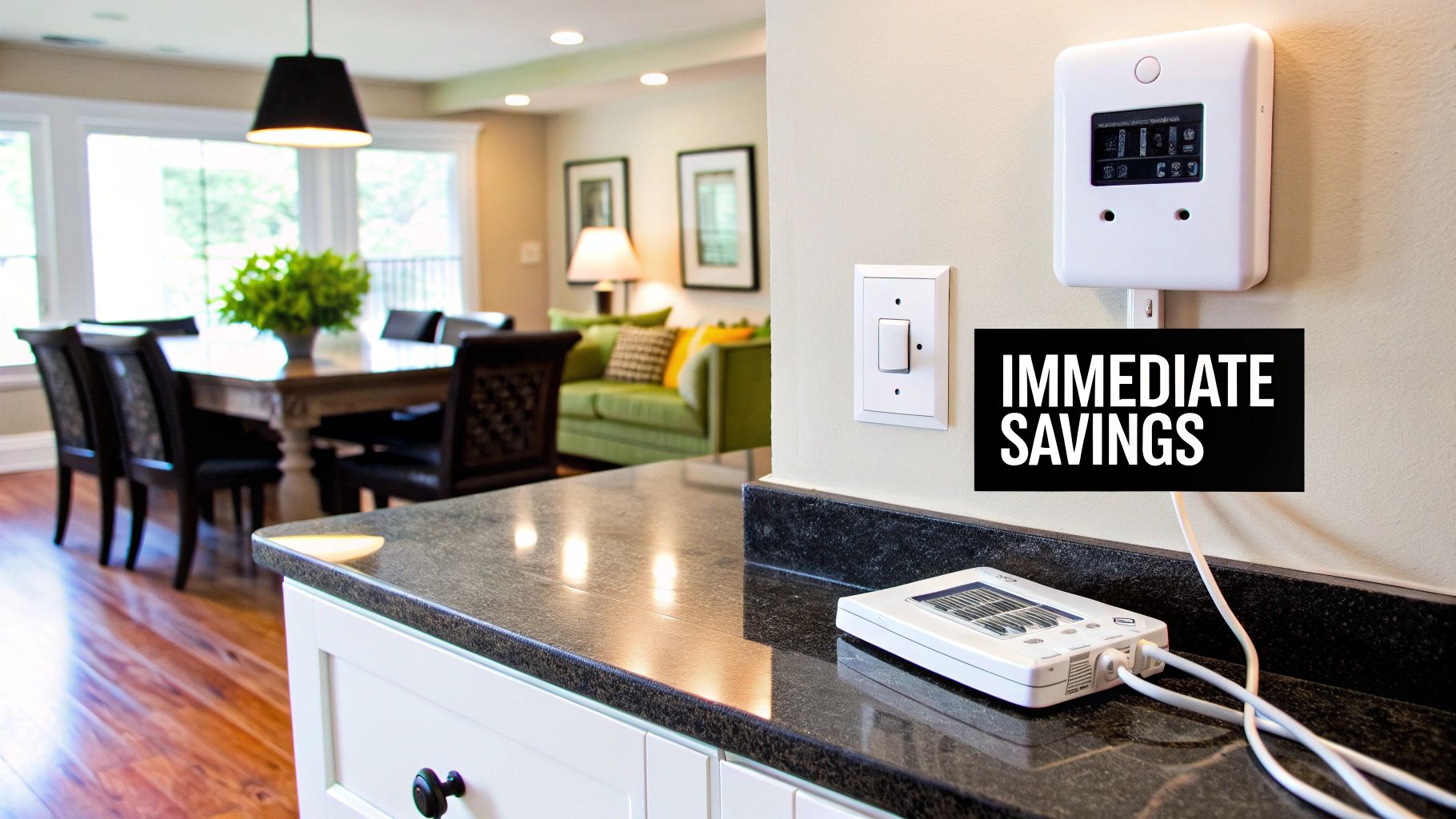
Before you start thinking about big, expensive upgrades, you need to figure out where your energy is actually going. In most homes, a few usual suspects are responsible for the bulk of the costs. The good news? Tackling them is often surprisingly simple and doesn't cost a dime. We're talking about building some positive momentum with easy wins that make a real, noticeable difference.
A great first step is to get comfortable with your utility bill. Learning how to read electricity bills is like getting a roadmap to your home's energy habits, showing you exactly where you can make changes.
Common Household Energy Hogs
Let's be honest, your HVAC system and water heater are the heavy hitters. Together, they can easily account for more than half of your total energy use. But don't overlook the other culprits—your refrigerator, clothes dryer, and all those electronics sitting on standby are pulling more power than you probably realize. For a deeper look at this, check out our collection of energy-efficient home tips over at https://automatedhomeguide.com/energy-efficient-home-tips/.
You don't need to rush out and buy new appliances to make a dent. Simple tweaks in how you use them can deliver some pretty impressive savings.
- HVAC Systems: Just adjusting your thermostat by a couple of degrees can have a huge impact on your heating and cooling costs. You'll barely notice the difference in comfort.
- Water Heaters: Most water heaters are set way too high from the factory. Lowering the temperature to 120°F (49°C) stops it from constantly wasting energy just to keep water scalding hot.
- Phantom Power: This is a big one. Get in the habit of unplugging chargers when you're done. For your entertainment center or home office, use a power strip to completely cut power to everything at once.
The energy-saving strategies that stick are the ones that become second nature. When you focus on these no-cost habits first, the goal of a lower electricity bill feels much more achievable and, frankly, more rewarding right from the start.
These small, consistent actions work. On a much larger scale, the European Union has managed to cut its per capita electricity use by about 3% since 2010. They did it through a combination of efficiency policies and getting people on board with making smarter energy choices, proving that millions of small actions really do lead to massive change.
To make it even clearer, I've put together a table with some of the easiest actions you can take right now.
Quick Wins for Immediate Energy Savings
This table breaks down the top energy-draining areas in your home and shows you the simple, no-cost actions you can take for each one. Think of this as your starting checklist for immediate results.
| Appliance/Area | Simple Action | Estimated Impact |
|---|---|---|
| HVAC System | Adjust thermostat 2-3 degrees | Up to 10% savings on heating/cooling |
| Water Heater | Lower temperature to 120°F (49°C) | 6-10% savings on water heating costs |
| Chargers & Electronics | Unplug when not in use | $100-$200 annual savings |
| Lighting | Switch to LED bulbs | 75% less energy use per bulb |
Taking these steps gives you a solid foundation. Once these habits are in place, you can move on to bigger projects with the confidence that you've already tackled the easiest and most effective changes.
Taming Your Home's Biggest Energy Hogs
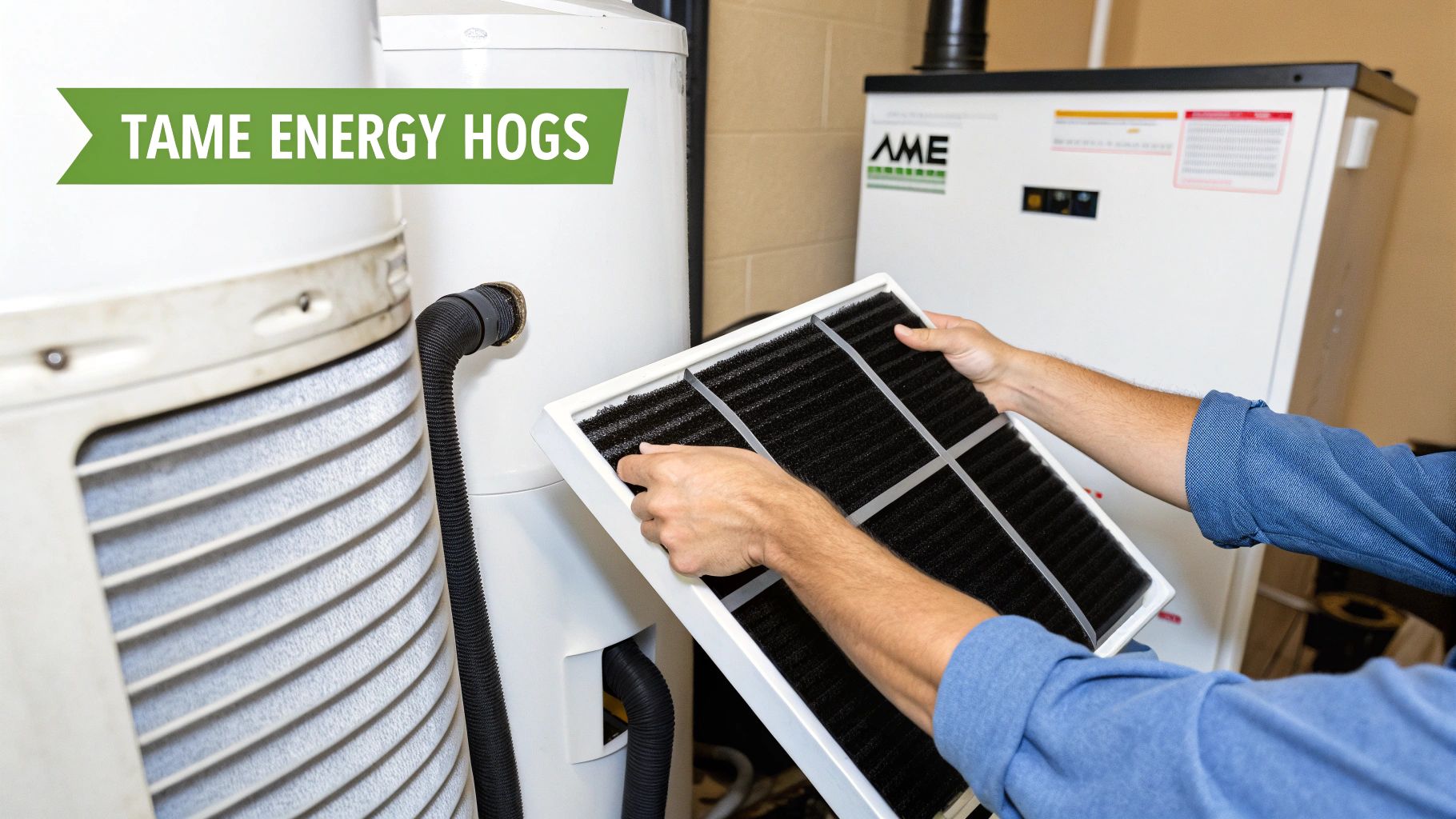
If you're serious about making a real dent in your electricity bill, you have to start with the biggest offenders. In almost every home I've seen, the same trio of appliances consumes the lion's share of energy: the HVAC system, the water heater, and the refrigerator. Focusing your efforts here is the fastest way to see a meaningful drop in your monthly usage.
These systems often run on autopilot, silently racking up costs without us even realizing it. The good news? You don't need a massive budget or a complete overhaul to make a difference. A few strategic adjustments can lead to significant savings over time.
Master Your Heating and Cooling
Your HVAC system is the undisputed king of home energy consumption. It’s a beast, often accounting for nearly half of your total electricity use. Taming it has to be your number one priority. Think about it: a poorly maintained air conditioner has to work much harder to cool your home, and that extra effort translates directly to a higher power bill.
Simple maintenance is your best friend here. For instance, a dirty, clogged air filter forces your system to struggle. Swapping it out for a clean one every one to three months is a five-minute task that pays for itself almost immediately. For a deeper dive, you can explore the real-world smart thermostat energy savings in our comprehensive guide at https://automatedhomeguide.com/smart-thermostat-energy-savings/.
Here’s a practical checklist to run through seasonally:
- Clean or Replace Filters: This is the easiest and most impactful step. Don't skip it.
- Clear Debris: Make sure the area around your outdoor unit is clear of leaves, grass, and branches. It needs to breathe to work efficiently.
- Check for Leaks: Seal any gaps around windows and doors with weatherstripping to keep the cool (or warm) air you paid for from escaping.
Focusing on efficiency in your own home contributes to a much larger effort. Improving efficiency in buildings and appliances could slash global electricity demand by as much as 10% by 2030. You can explore more data on global energy trends in this Ember energy report.
Optimize Your Water Heater
Coming in at a close second, your water heater is another huge energy user. It works around the clock to keep a large tank of water hot and ready, whether you need it or not. The problem is that most of them are set way too high right out of the box.
A simple twist of the dial can save you 6-10% on water heating costs. The Department of Energy recommends a setting of 120°F (49°C). This is plenty hot for showers and dishes, but it prevents wasteful energy use and seriously reduces the risk of scalding.
Another quick win is insulating the tank and the first few feet of the hot water pipes coming out of it. An insulating blanket is cheap, easy to install, and dramatically reduces standby heat loss—that's the energy your heater wastes just keeping the water warm between uses.
Make Your Refrigerator More Efficient
Your fridge runs 24/7. It's a constant, low-level energy drain that really adds up over a month. A few simple habits can ensure it runs as efficiently as possible.
First, give it some breathing room. Refrigerators need good air circulation around their coils (usually on the back or bottom) to get rid of heat. If you push it flush against the wall or cram stuff around it, the compressor has to work harder. Pull it out just a few inches.
Next, check the door seals. A leaky seal lets cold air seep out, forcing the fridge to run more often to stay cool. Try the dollar-bill test: close the door on a bill. If you can pull it out easily, your seals are too loose and probably need a good cleaning or even a replacement. It's a tiny fix that saves a surprising amount of energy.
Finding and Unplugging Phantom Power Drains
https://www.youtube.com/embed/zEzjVUzNAFA
Even when you’ve turned them off, many of your home’s electronics are still quietly costing you money. This sneaky energy use is often called phantom power or vampire load. It's the electricity drawn by devices left in standby mode, always ready to spring to life at a moment's notice.
Think about your TV’s little red light, the game console downloading an update in the middle of the night, or all those phone chargers left plugged in long after your phone is full.
On their own, these little drains don't seem like much. But add them all up, and they can account for up to 10% of your total household electricity use. For many families, that’s easily over a hundred dollars a year wasted on devices that aren't even being used. The first real step is figuring out which gadgets are the worst offenders.
Identifying Your Worst Energy Vampires
The best way to find your home's biggest phantom power culprits is to do a quick energy audit yourself. You don’t need to call in a pro; all you need is a simple tool called a watt meter. A smart plug with built-in energy monitoring works just as well. Simply plug the meter into the wall, then plug your device into the meter.
Now, turn the device off and look at the meter's reading. If it's still showing any wattage, you've found an energy vampire. I was shocked when I first did this and saw how much power my home office setup and entertainment center were pulling 24/7. This simple test tells you exactly where to focus your efforts.
The infographic below gives you an idea of what to expect from common household items.
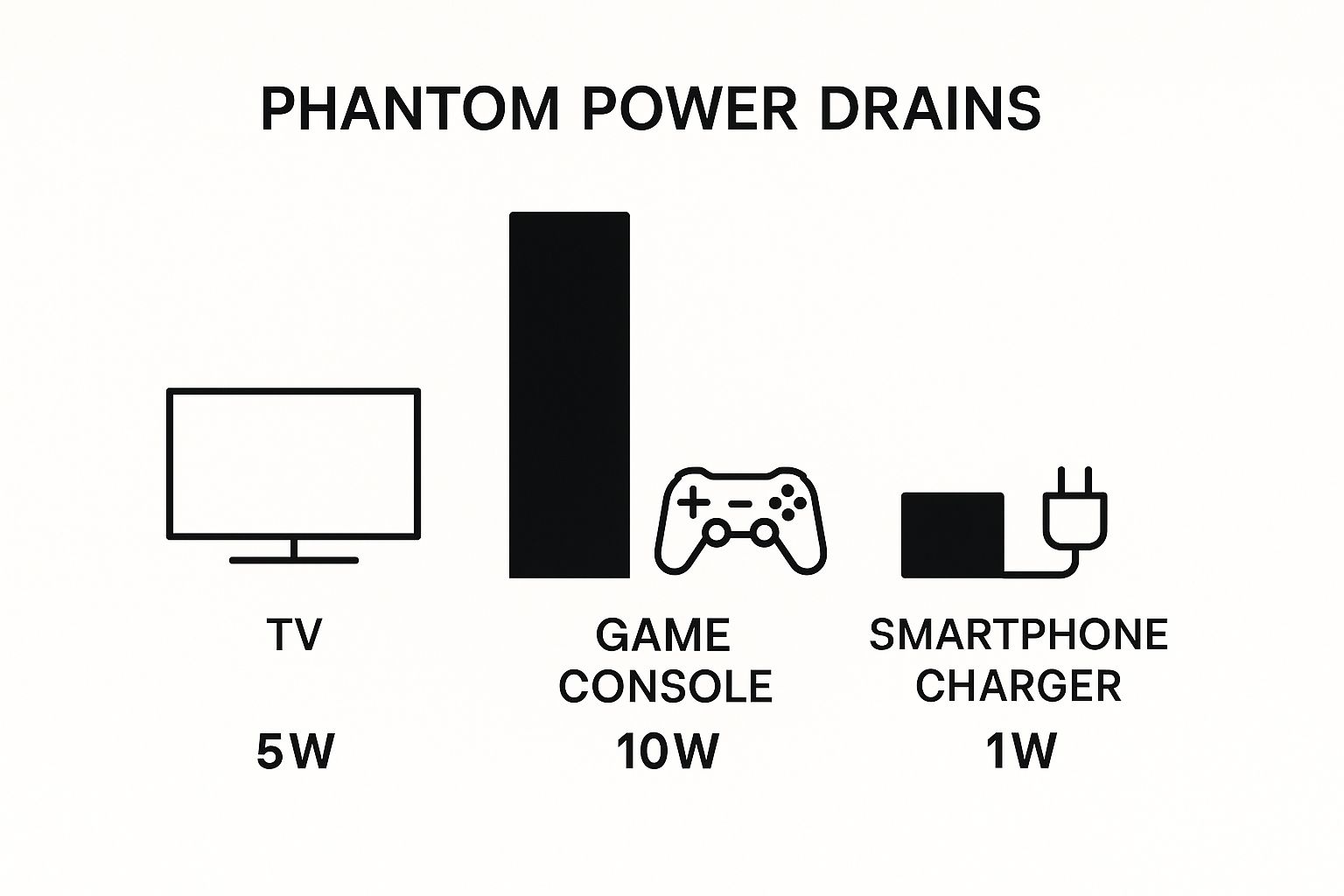
As you can see, things like game consoles and cable boxes are often the biggest culprits, constantly sipping power for quick-start features and background updates.
Practical Solutions to Stop the Drain
Once you've identified your problem areas, it's time to take action. The most straightforward solution is to just unplug things when you’re done with them. But let's be realistic—that's a pain for things you use every day.
A much better approach is to use power strips. Group related electronics together. For instance, plug your TV, soundbar, game console, and streaming box into a single strip. When you're finished with your movie or gaming session, one flick of a switch cuts the power to everything. It's a simple habit that makes a real impact.
A great upgrade from a basic power strip is a smart power strip. These have a "master" outlet for your main device (like your computer or TV). When it detects that you've turned the master device off, it automatically cuts power to all the other outlets. This kills the phantom load from your peripherals without you even having to think about it.
Looking for more tools to help cut your costs? We've put together a full list of our favorite devices to reduce your electricity bill. Putting a few of these simple fixes into practice will help you finally slay those energy vampires and keep that wasted cash in your wallet.
Using Smart Home Tech to Automate Savings
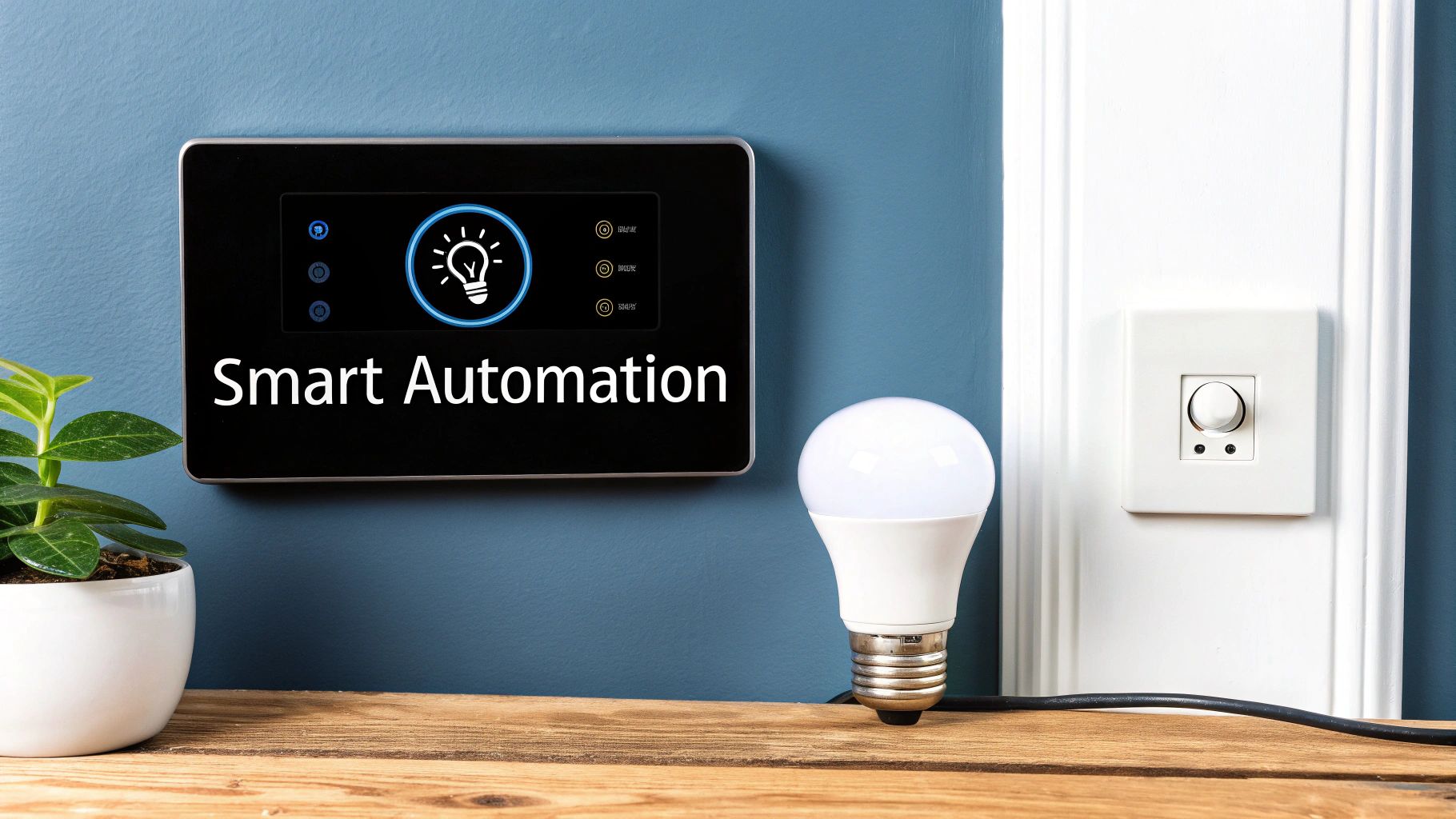
While manually flicking off switches and adjusting the thermostat works, it demands constant vigilance. Let’s be honest, life gets busy. This is where modern tech steps in, offering a way to automate your savings so you don't have to think about it.
Smart home devices can learn your daily routines, run on schedules, and make intelligent adjustments to cut electricity waste. You’re essentially putting your home’s biggest energy hogs on autopilot. This isn't about creating a complicated, gadget-filled house; it's about making a few strategic upgrades that tackle the biggest drains on your power bill.
Smart Thermostats: The Brains of Your HVAC System
For most homes, the heating and cooling system is the undisputed king of energy consumption. That makes a smart thermostat the single most powerful tool in your energy-saving arsenal.
Devices from brands like the Google Nest Learning Thermostat and ecobee Smart Thermostat are so much more than programmable timers. They use a mix of sensors and sophisticated algorithms to actually learn your household's rhythm. For instance, they can sense when the house is empty and automatically dial back the A/C or heat to a more economical setting.
Some even use geofencing, which tracks your smartphone's location. The system knows when you're on your way home and starts cooling or heating the house to your preferred temperature just in time for your arrival. This kind of intelligence removes the guesswork and the human error of forgetting to adjust the temperature before leaving for the day.
Intelligent Lighting and Smart Plugs
Lighting is another area where a little automation goes a long way. Upgrading to smart LED bulbs or installing smart switches gives you incredible control. You can schedule your living room lights to dim in the evening or turn off completely at midnight, all from an app on your phone.
Smart plugs are the unsung heroes of energy efficiency. They can make almost any corded device "smart." Got an entertainment center full of devices sipping phantom power all night? Plug the whole power strip into a smart plug and schedule it to shut down completely while you're asleep. This is the easiest way to slay those "vampire" loads we talked about.
Many smart plugs also come with a fantastic bonus feature: real-time energy monitoring. You can finally see exactly how much electricity that old space heater or gaming console is actually pulling.
The real power of a smart home is the data it provides. Whole-home energy monitors give you a bird's-eye view of your electricity consumption in real time. This information is invaluable for pinpointing exactly where your energy dollars are going, empowering you to make even smarter choices.
Choosing Your Smart Home Energy Savers
Deciding where to start can feel overwhelming, but it doesn't have to be. Most people begin with the device that tackles their biggest energy problem or fits their current budget.
This table gives a quick rundown of the most common options to help you choose.
| Smart Device | Primary Use | Average Cost | Savings Potential |
|---|---|---|---|
| Smart Thermostat | Automates heating and cooling | $150 – $250 | High |
| Smart LED Bulbs | Schedules and dims lighting | $10 – $20 per bulb | Medium |
| Smart Plugs | Controls and monitors appliances | $15 – $30 each | Medium |
| Energy Monitor | Tracks whole-home usage | $200 – $400 | High (Indirect) |
Ultimately, whether you're a renter looking for a simple, installation-free solution like smart plugs or a homeowner ready to invest in a full-blown smart thermostat, there’s a piece of tech that can start lowering your electricity bill right away.
Long-Term Plays for Serious Energy Savings
Changing your daily habits and adding a few smart gadgets is a great start. But if you're ready to make a bigger dent in your energy bills, some long-term investments can permanently change how your home consumes power.
Think of these as the major leagues of energy efficiency. They come with an upfront cost, no doubt, but the payoff comes in the form of significantly lower bills for years to come. You’re not just buying a thing; you’re investing in your home’s future.
Upgrade Your Big-Ticket Appliances
When that old fridge finally gives up the ghost, or the dishwasher starts making strange noises, see it as an opportunity. Choosing an ENERGY STAR certified model is one of the smartest moves you can make.
These appliances are independently tested to save energy without you having to give up the features you want. An ENERGY STAR refrigerator, for instance, uses about 9% less energy than a standard one. It might not sound like a lot, but over the 10-15 year lifespan of the appliance, that really adds up.
When you're out shopping, keep an eye out for the yellow EnergyGuide label. That little sticker is your best friend—it gives you a clear estimate of how much the appliance will cost to run each year. It makes it dead simple to compare different models and see which one will save you the most money down the road.
Get Serious About Weatherizing Your Home
Believe it or not, one of the most powerful ways to cut your energy use has nothing to do with what’s plugged in. It’s all about sealing up your home. Weatherization is just a fancy word for stopping air from leaking in and out. A leaky home forces your HVAC system—by far your biggest energy hog—to work overtime.
You can get started with some simple weekend projects:
- Hunt Down Air Leaks: Grab a tube of caulk and some weatherstripping and get to work on the gaps around your windows and doors. Don't forget to check where pipes and wires enter your house. All those tiny cracks combined can be like leaving a window wide open 24/7.
- Beef Up Your Insulation: If your attic is under-insulated, you're practically sending your heating and cooling dollars straight through the roof. Adding more insulation is a one-and-done job that pays you back every single season by keeping you warmer in the winter and cooler in the summer.
A well-sealed home does more than just lower your bills. It makes your house genuinely more comfortable. You get rid of those annoying drafts and the temperature stays much more consistent. It’s an investment in your comfort as much as your finances.
Tap Into Renewable Energy
If you're looking for the ultimate way to slash your electric bill and gain some energy independence, it's time to look at renewable energy. Installing solar panels on your roof can drastically cut—or even completely wipe out—your monthly power bill.
For anyone planning major home upgrades, looking into the value of installing solar panels is a game-changer. It’s a real step toward securing your energy future.
This isn't some niche idea anymore. It's part of a massive global shift. In 2024, the efficiency of the entire global power sector jumped by 7%, a huge leap driven largely by the growth of solar and wind. You can dive deeper into these trends in the Energy Institute's Statistical Review.
By going solar, you're not just a consumer; you're part of that positive change. The initial cost can be intimidating, but a lot of federal and state incentives are out there to help bring that price down, making it a surprisingly practical move for many homeowners.
Common Questions About Lowering Your Home's Electricity Use
As you start looking for ways to cut down on electricity, a few questions always seem to pop up. Let’s get you some straight answers so you can put your energy (pun intended) where it will make the most difference.
What’s the Single Biggest Thing I Can Do to Lower My Electric Bill?
If you're looking for the one thing that will give you the most bang for your buck, look no further than your heating and cooling system. For most of us, the HVAC system is the undisputed energy hog of the house, often responsible for nearly half of the entire energy bill.
The good news is that you don't need a huge budget to make a dent. Just getting into the habit of adjusting your thermostat by a few degrees can work wonders. Other simple, no-cost actions include:
- Changing your air filters on a regular schedule.
- Sealing up drafts around windows and doors.
These small changes add up fast. If you're ready for a small investment, a smart thermostat is probably the single best upgrade you can make. It learns your daily patterns and adjusts the temperature automatically, so you’re never wasting energy heating or cooling an empty house.
The best energy-saving strategy is always the one you'll actually stick with. When you tackle your HVAC system first, you're hitting the biggest part of your bill, and seeing those results quickly is a great motivator.
How Much Can I Realistically Save by Unplugging My Gadgets?
It’s easy to dismiss the tiny bit of power a single device uses when it's "off," but when you add it all up, this "vampire power" becomes a real problem. In fact, these phantom loads account for a surprising 5% to 10% of the electricity used in most homes.
What does that look like in real money? For the average American household, that's anywhere from $100 to $200 back in your pocket each year.
The worst culprits are usually the clusters of electronics in your entertainment center and home office. Think about your TV, cable box, sound system, and gaming console all drawing power at once. The easiest way to fight back is with smart power strips, which let you cut power to a whole group of devices with a single click or on a set schedule.
Are Those Expensive Energy-Efficient Appliances Actually Worth the Money?
For the big, hard-working appliances you use every day—like your refrigerator, dishwasher, or clothes washer—the answer is almost always yes. A model with an ENERGY STAR certification can use anywhere from 10% to 50% less energy than a standard, less-efficient one.
Sure, the sticker price is a bit higher. But the real story is in the long-term savings. Every appliance comes with a yellow EnergyGuide label that estimates its annual operating cost. This little sticker is your best friend. It lets you do some quick math to figure out the payback period and see just how much you'll save over the life of the appliance, making it a sound financial move, not just an eco-friendly one.
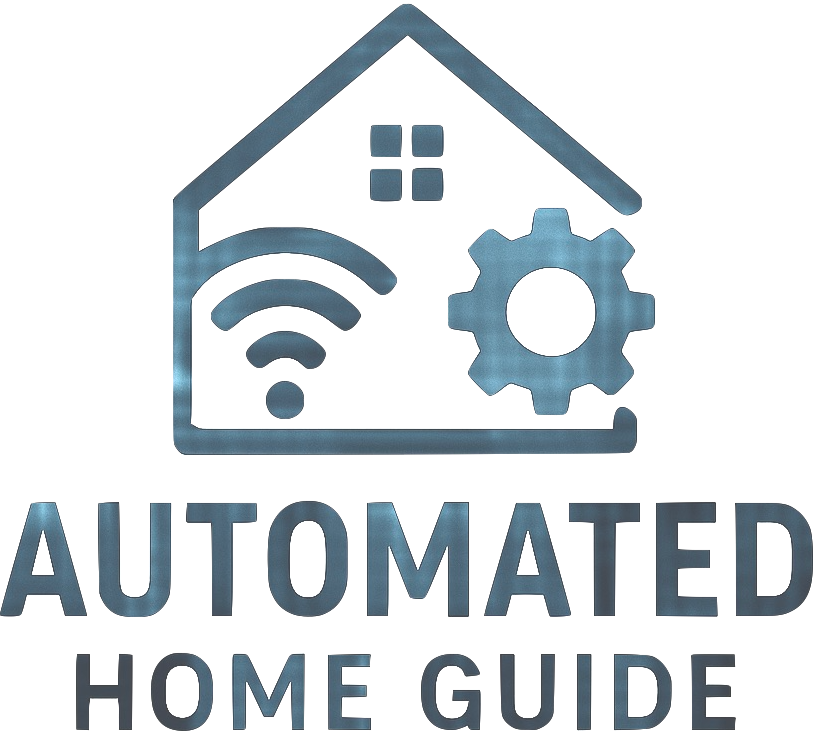
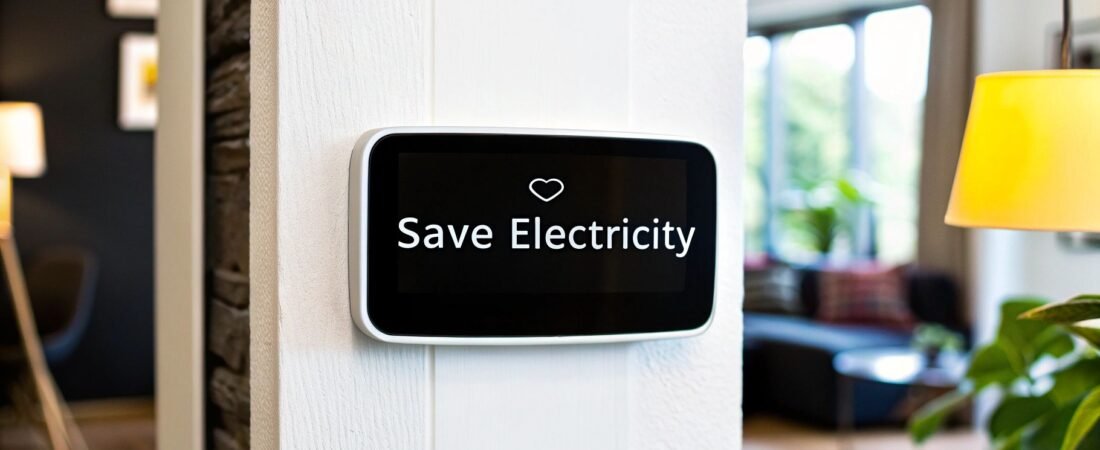
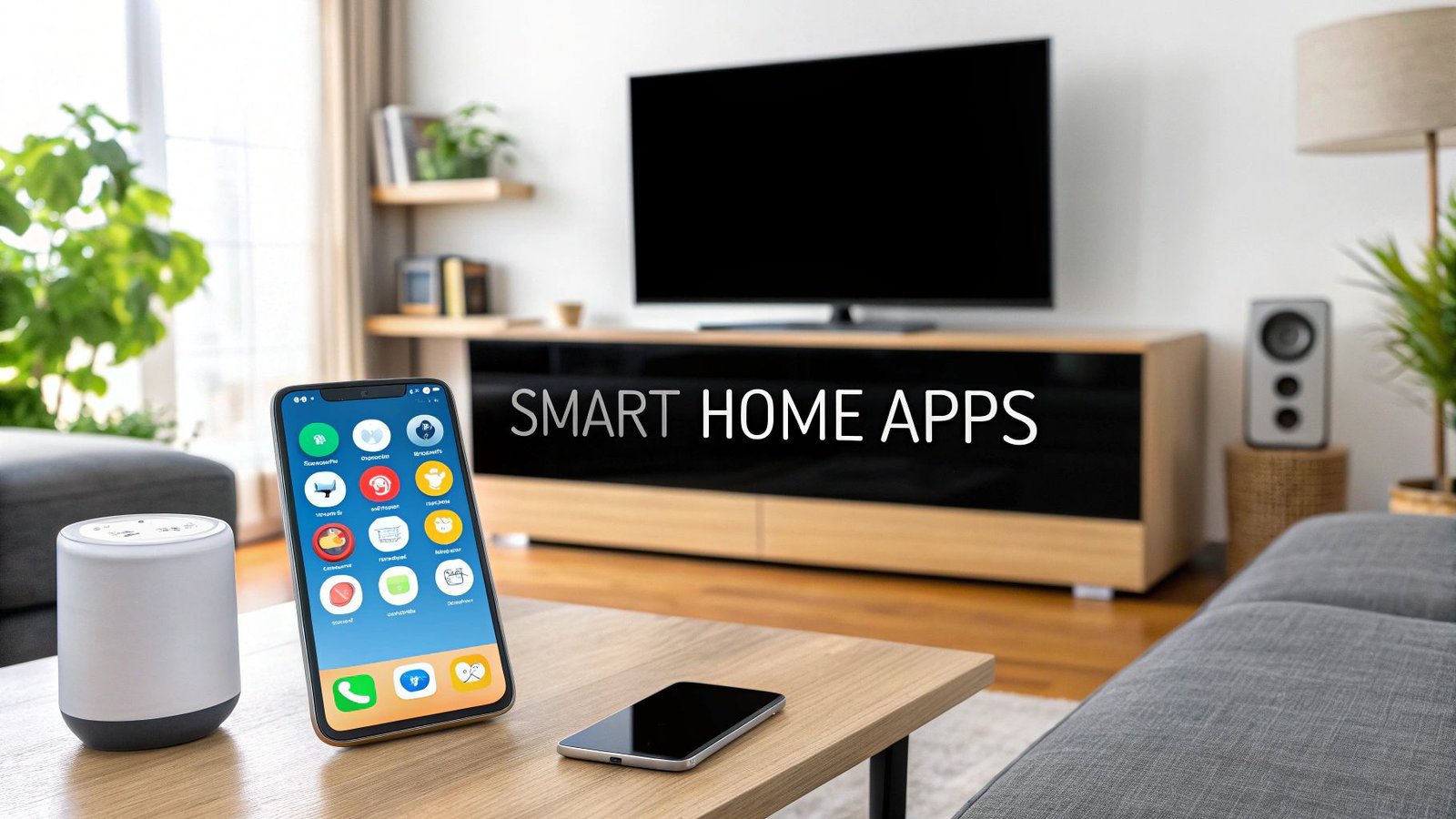

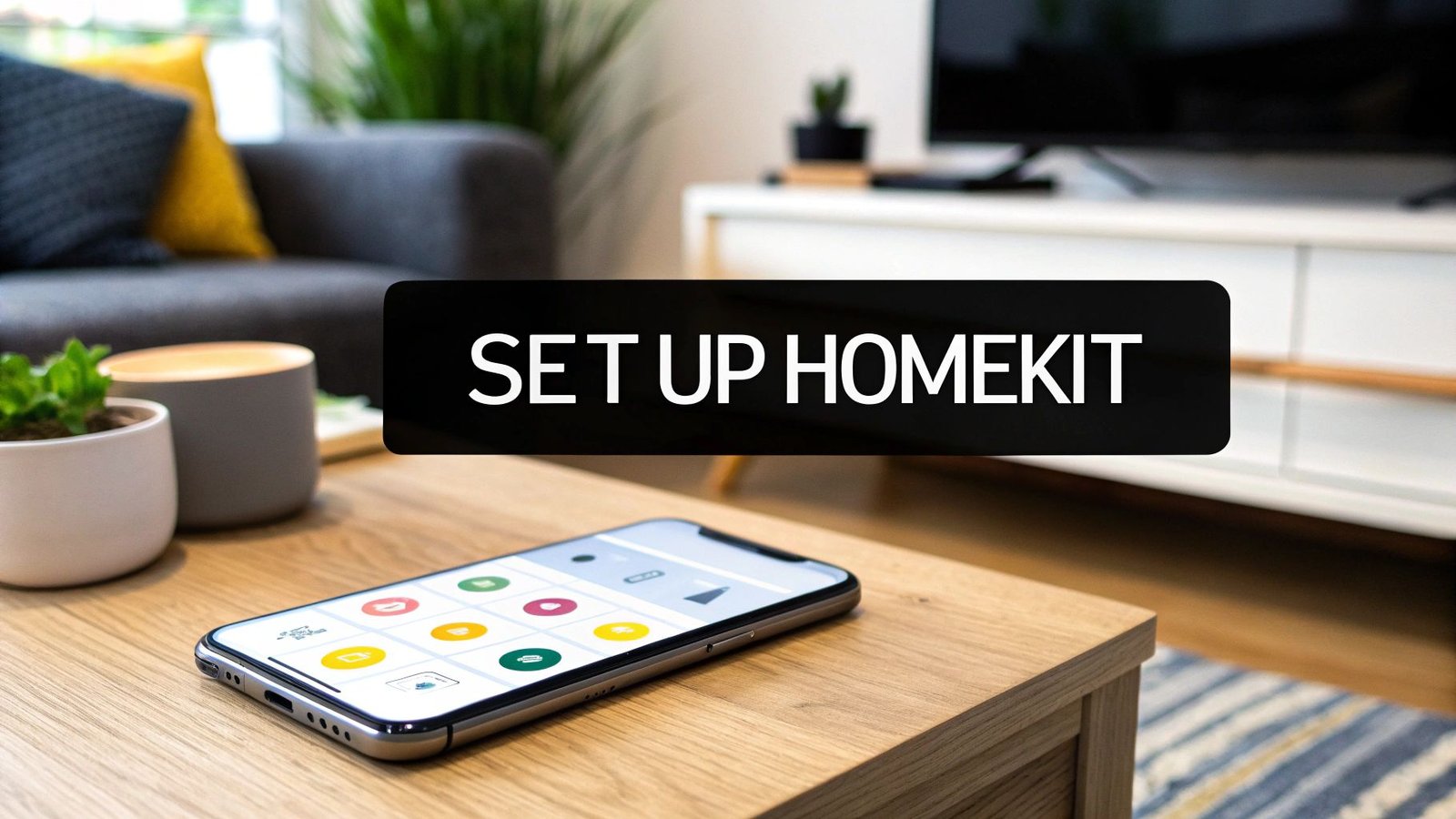
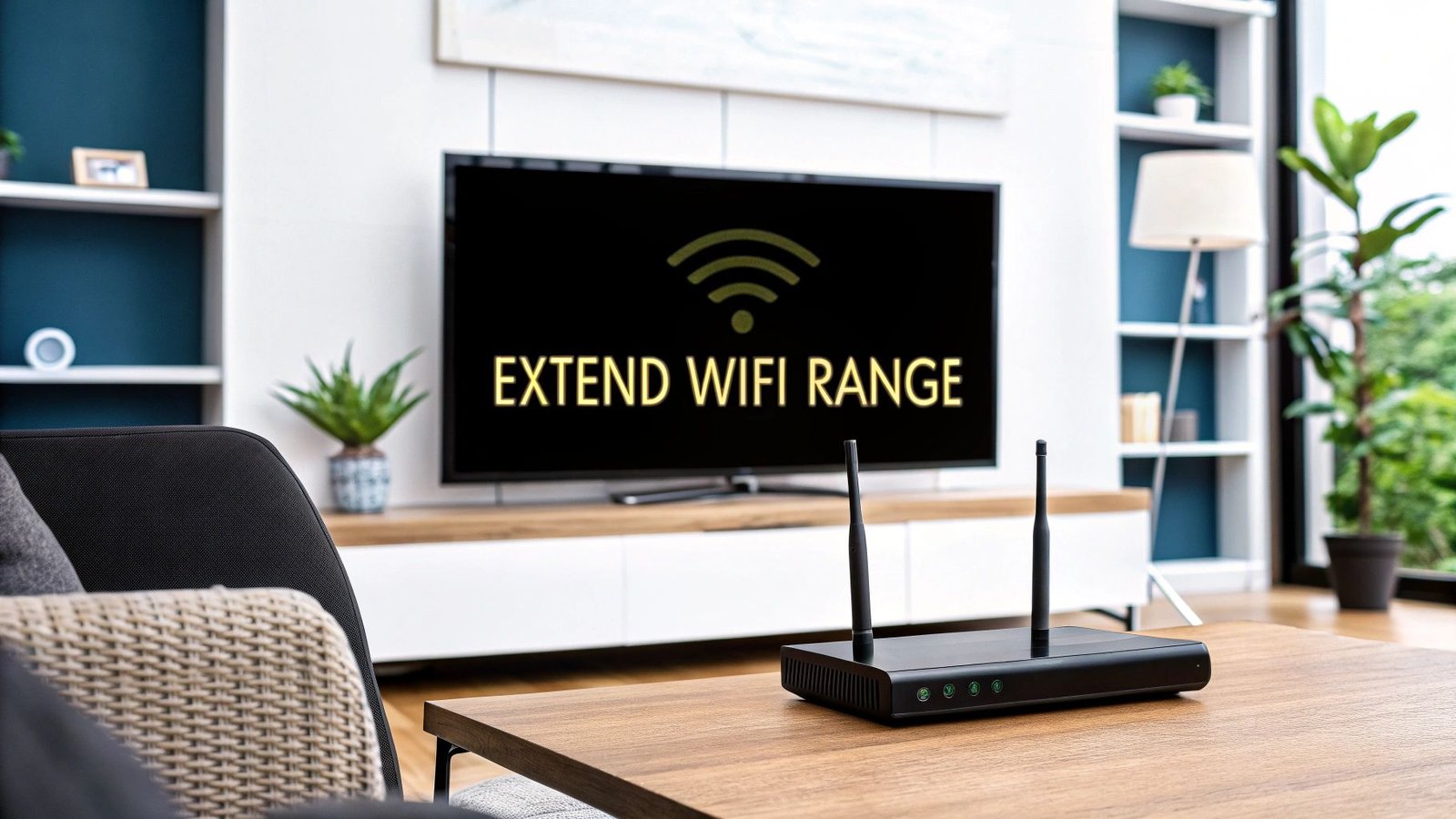
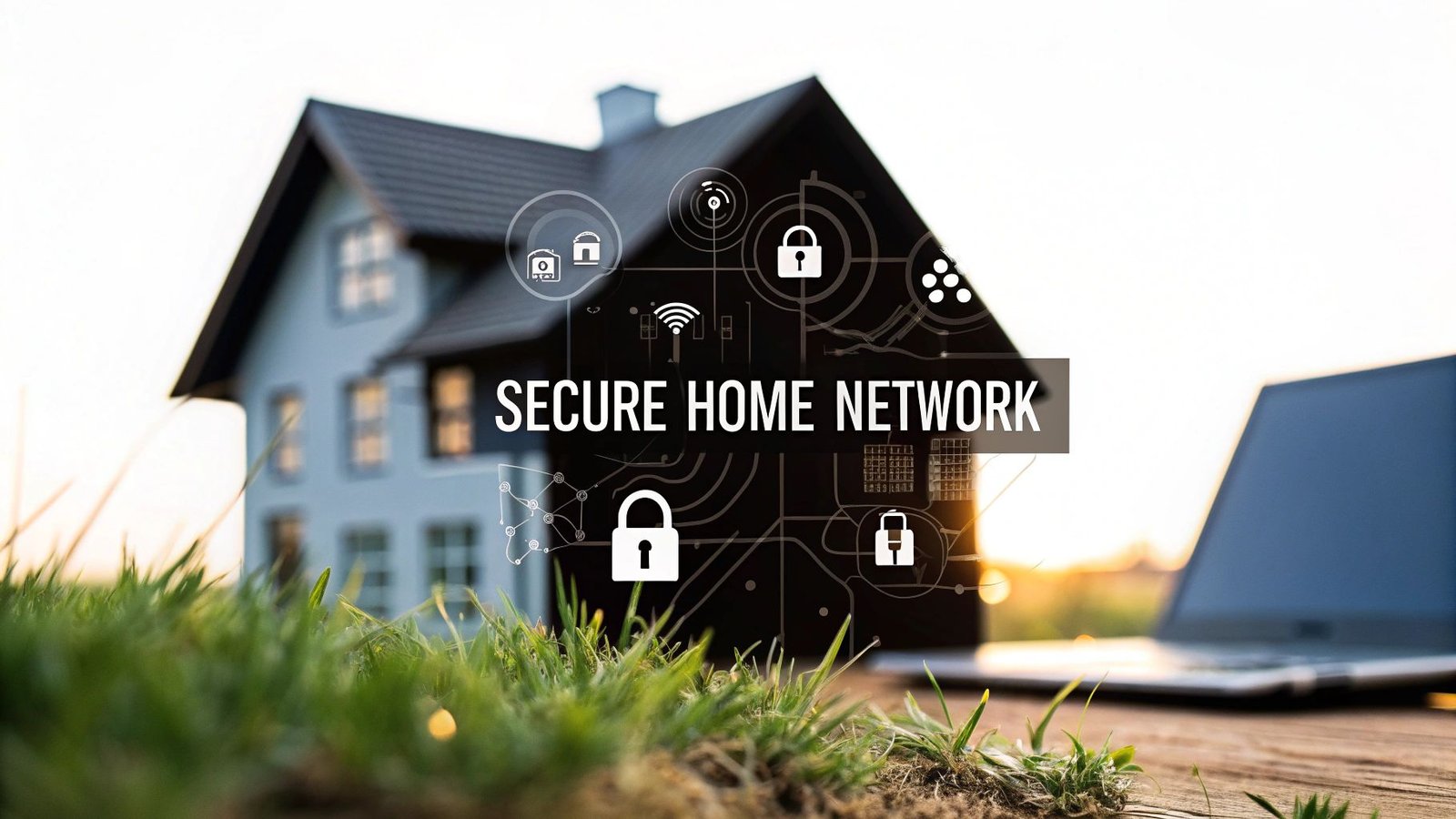
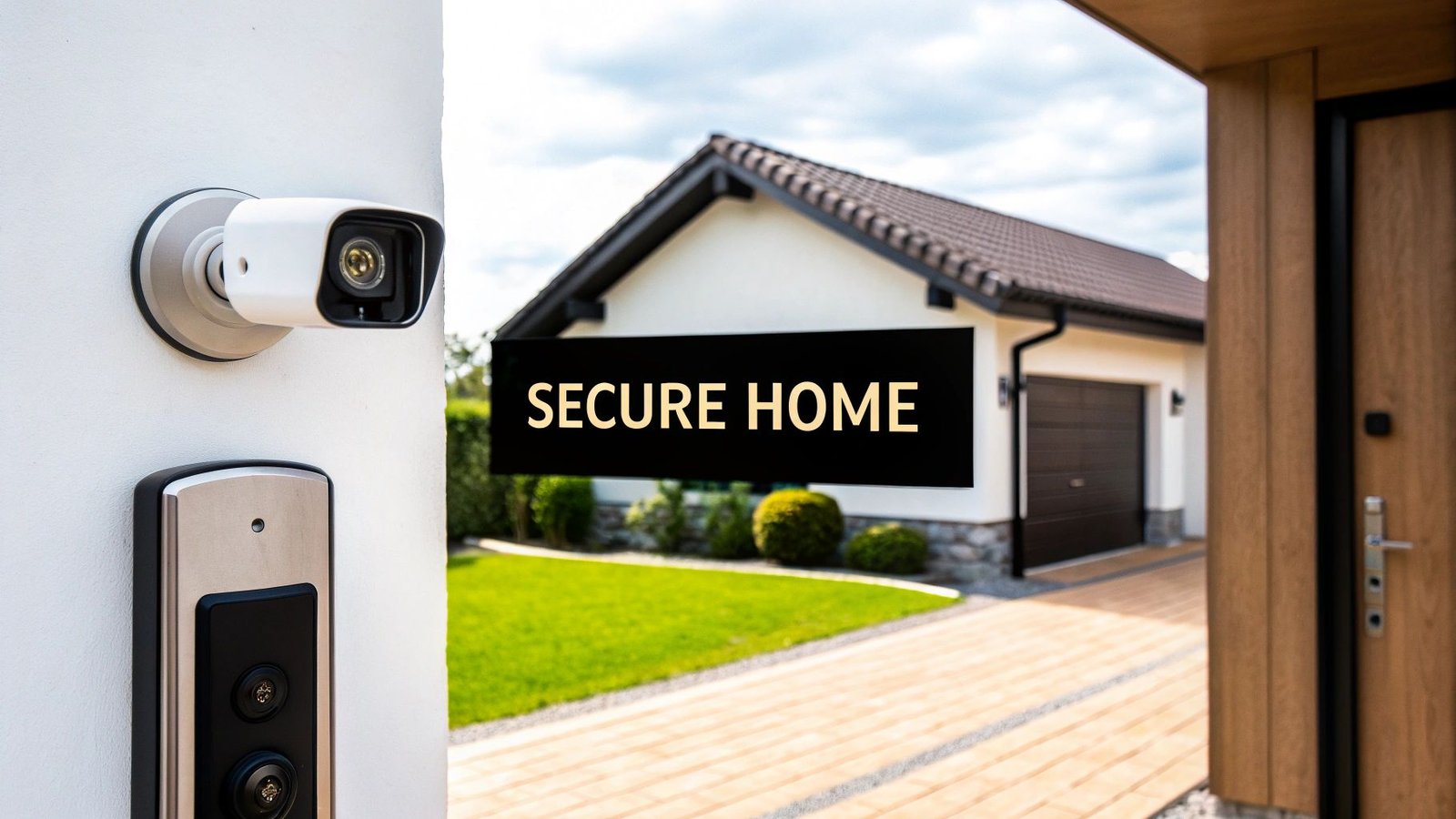
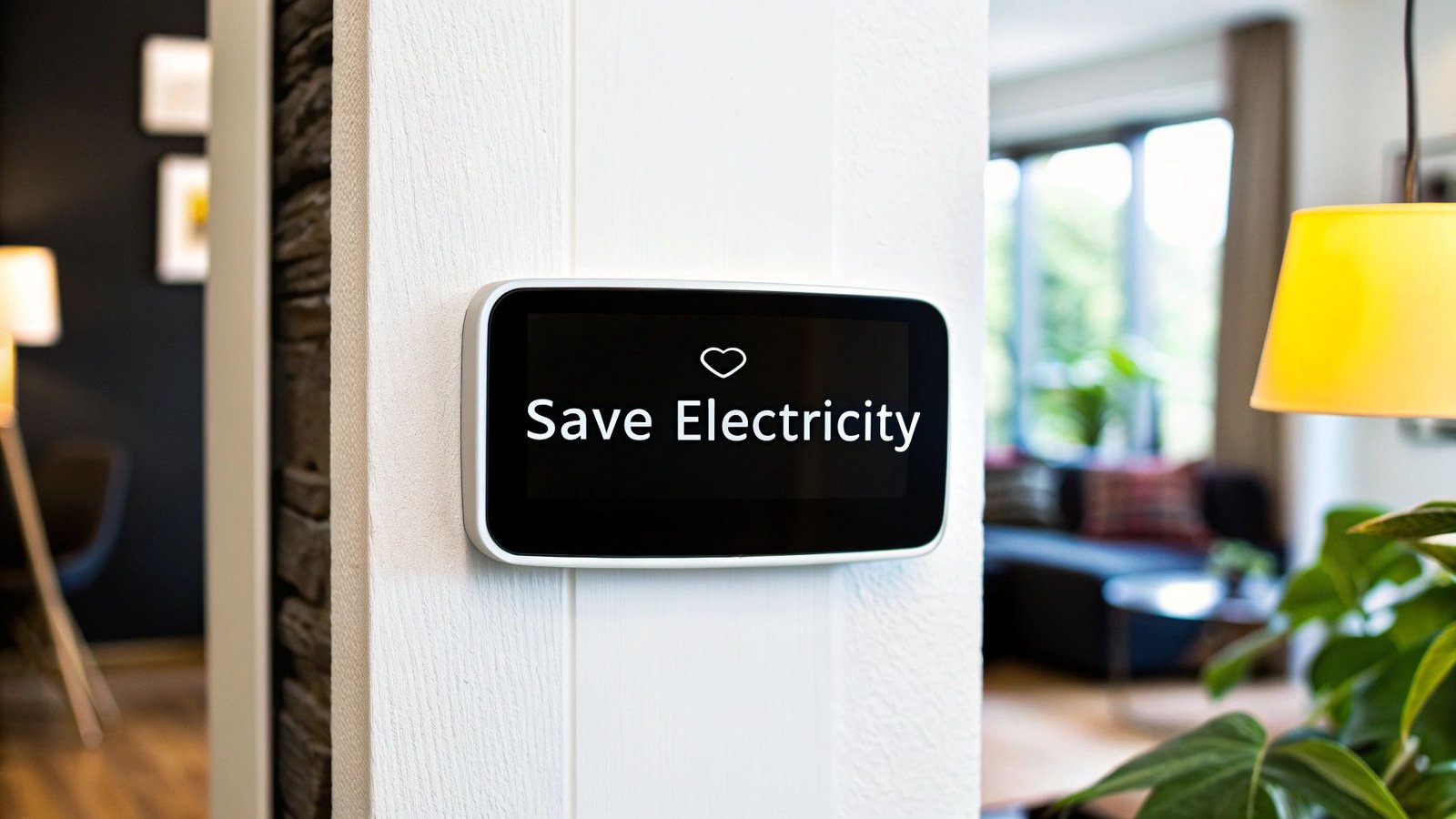
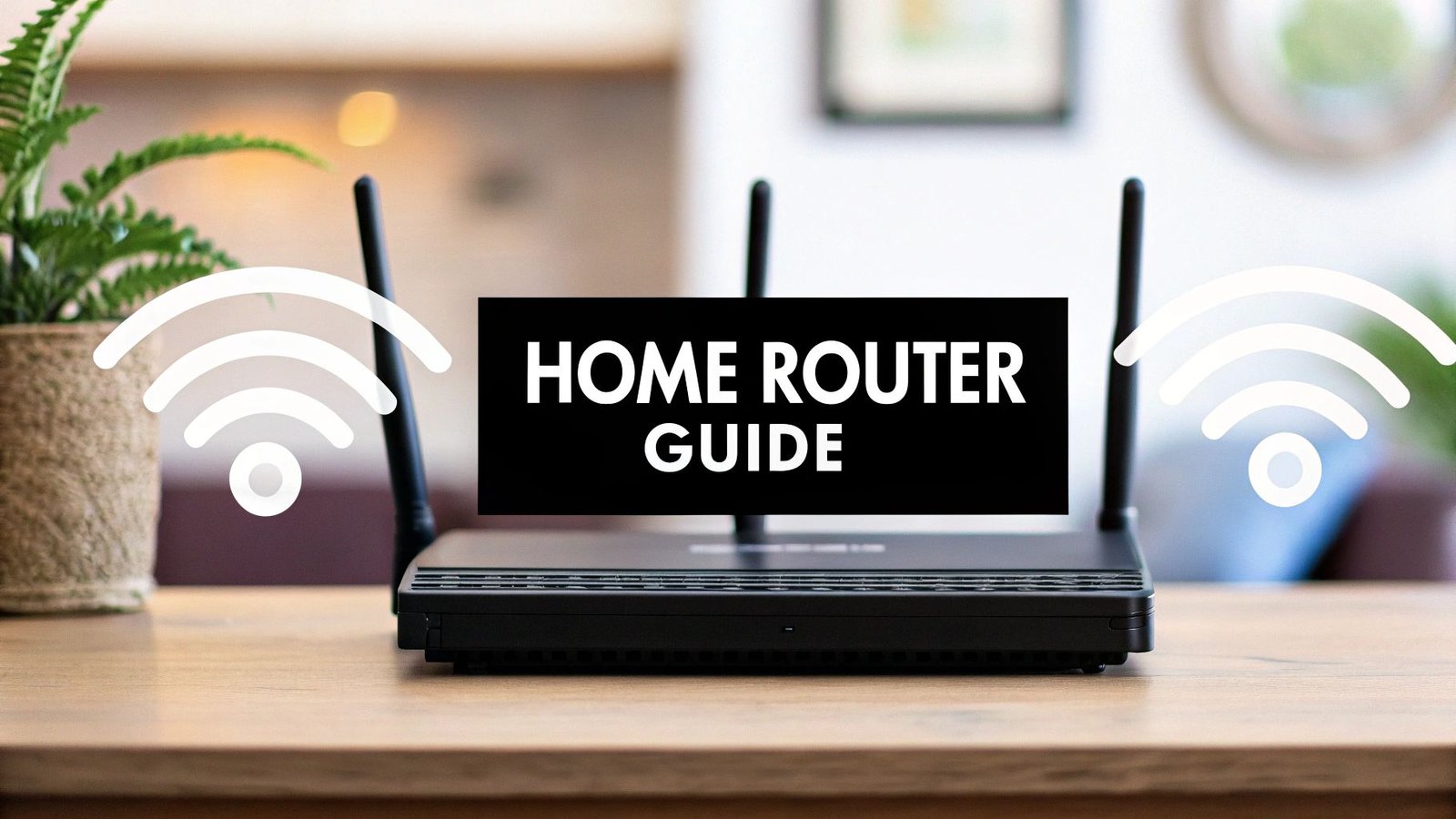
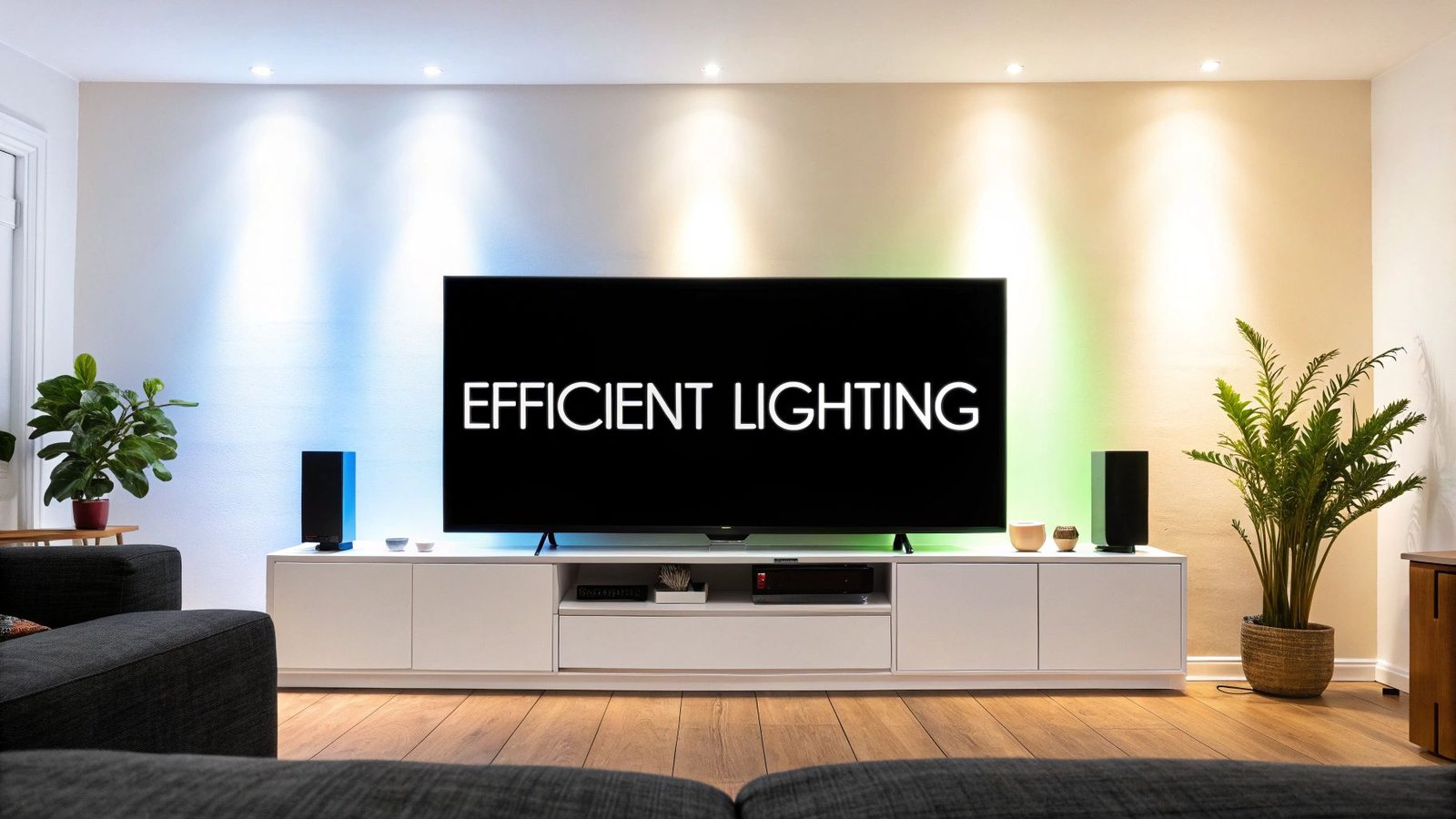
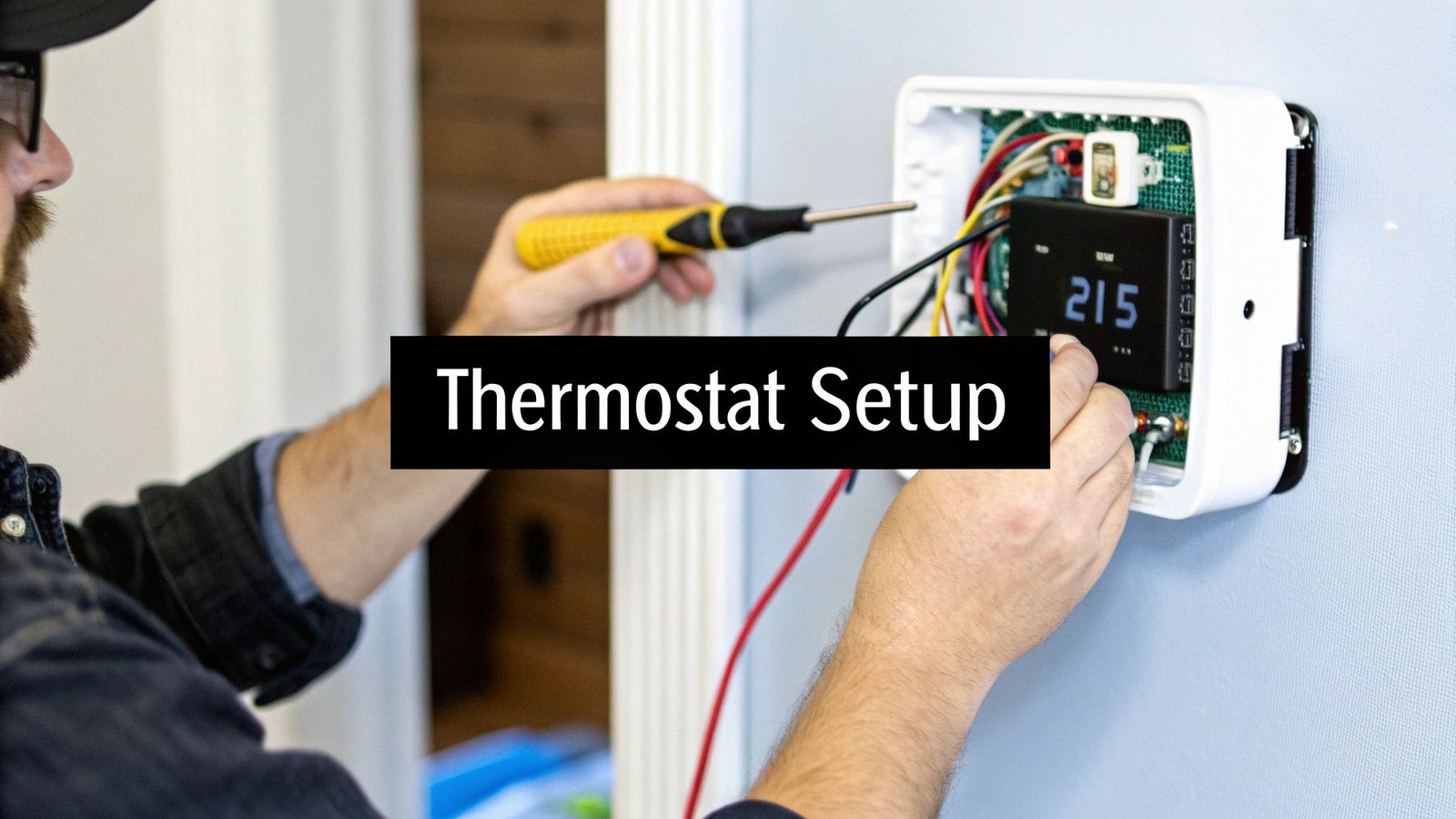
Leave a Reply